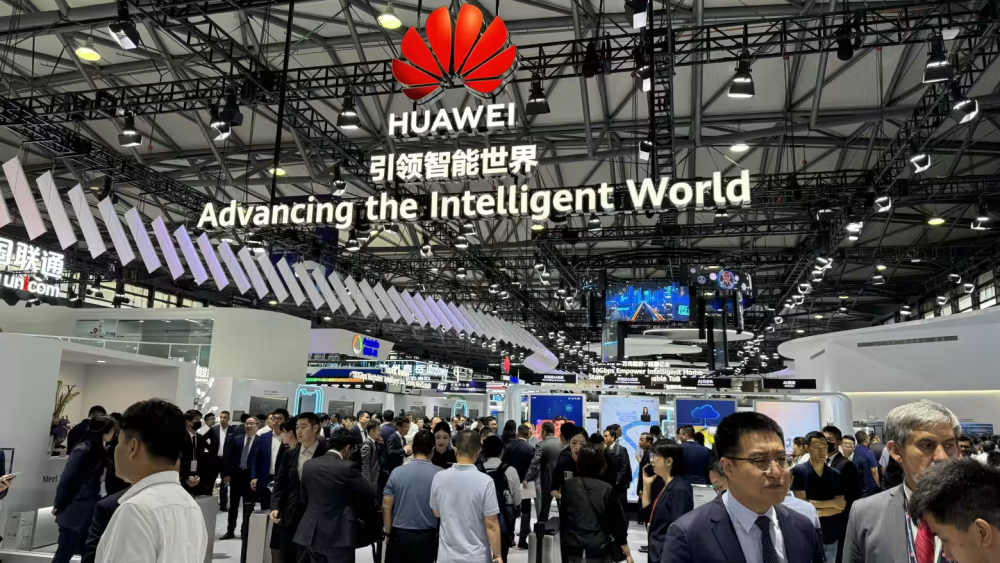
Huawei và ZTE đang đẩy mạnh cung cấp hạ tầng AI tại các quốc gia Vành đai và Con đường
-
Huawei và ZTE đang mở rộng cung cấp dịch vụ AI sang các quốc gia thuộc sáng kiến Vành đai và Con đường, trong bối cảnh bị Mỹ và nhiều nước phương Tây cấm vận vì lo ngại an ninh dữ liệu.
-
Tại MWC Shanghai 2025, Chủ tịch luân phiên Huawei – Eric Xu – nhấn mạnh cam kết giúp các nhà mạng ở Global South phát triển hạ tầng AI và tăng trưởng bền vững.
-
Ở Malaysia, nhiều công ty tư nhân ký biên bản ghi nhớ với Huawei: một công ty logistics tích hợp AI vào chuỗi cung ứng, công ty công nghệ thông tin xây nền tảng thương mại điện tử và khách hàng thân thiết.
-
Uzbekistan hợp tác chặt chẽ với Huawei để phát triển trung tâm dữ liệu AI phục vụ kế hoạch đạt 1,5 tỉ USD doanh thu phần mềm AI vào năm 2030. Huawei đang dẫn đầu xây dựng đám mây chính phủ số của nước này.
-
Huawei chi hơn 140 triệu USD mỗi năm cho R&D trung tâm dữ liệu AI và đã triển khai tại nhiều nước. Chi phí thấp và kinh nghiệm triển khai giúp Huawei được ưa chuộng ở các nước còn yếu công nghệ.
-
Theo IDC, đầu tư hạ tầng AI toàn cầu sẽ đạt 223 tỉ USD vào năm 2028. Dù Mỹ hiện chiếm thị phần lớn nhất, Trung Quốc có tốc độ tăng trưởng trung bình hàng năm cao nhất: 35% so với 34% của Mỹ và 21% tại các khu vực khác.
-
ZTE cũng ký kết hợp tác AI với CelcomDigi (Malaysia) và XLSmart Telecom Sejahtera (Đông Nam Á). ZTE thử nghiệm công nghệ mới tại UAE vào tháng 6.
-
Chiến lược chung là tận dụng thế mạnh về chi phí, chuỗi cung ứng nội địa và chuyên môn trong triển khai trạm gốc để mở rộng ảnh hưởng toàn cầu.
-
Năm 2024, Huawei dẫn đầu doanh thu thiết bị viễn thông toàn cầu với 31% thị phần – hơn gấp đôi Ericsson hoặc Nokia. Cùng với ZTE (hạng 4), hai hãng chiếm trên 40% thị phần.
-
Huawei đang phát triển chip AI riêng do bị Mỹ siết xuất khẩu chip từ tháng 5/2025. Dù thừa nhận vẫn tụt hậu một thế hệ so với chip đơn của Mỹ, CEO Nhậm Chính Phi cho rằng Huawei sẽ được lợi từ các hạn chế mới này.
-
Nvidia CEO – Jensen Huang – cũng nhận định rằng lệnh cấm mới của Mỹ vô tình giúp Huawei đẩy mạnh phát triển nội lực.
📌 Huawei và ZTE đang biến AI thành công cụ mở rộng ảnh hưởng tại các quốc gia Vành đai và Con đường, tận dụng chi phí thấp, công nghệ nội địa và thị phần viễn thông (trên 40%). Với 223 tỉ USD đầu tư hạ tầng AI toàn cầu vào năm 2028, Trung Quốc tăng trưởng 35%/năm. Dù bị Mỹ trừng phạt chip, Huawei tiếp tục mở trung tâm dữ liệu ở Uzbekistan và Malaysia, thúc đẩy chiến lược AI kết hợp 5G, đám mây và phát triển chip nội địa.
https://asia.nikkei.com/Business/Technology/Artificial-intelligence/Huawei-and-ZTE-take-AI-to-Belt-and-Road-shrugging-off-US-sanctions
Huawei and ZTE take AI to Belt and Road, shrugging off US sanctions
Thảo luận
Follow Us
Tin phổ biến



